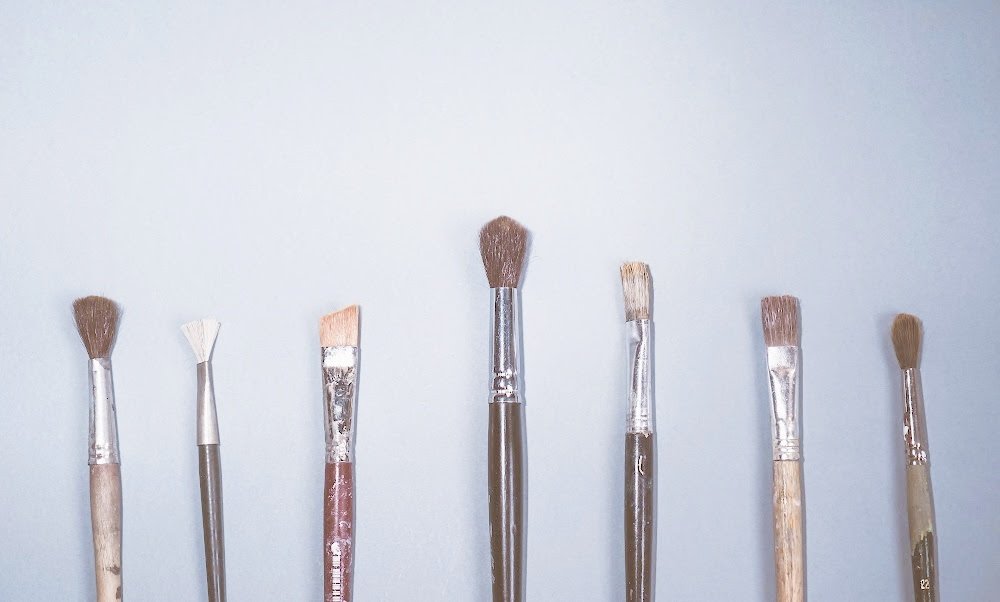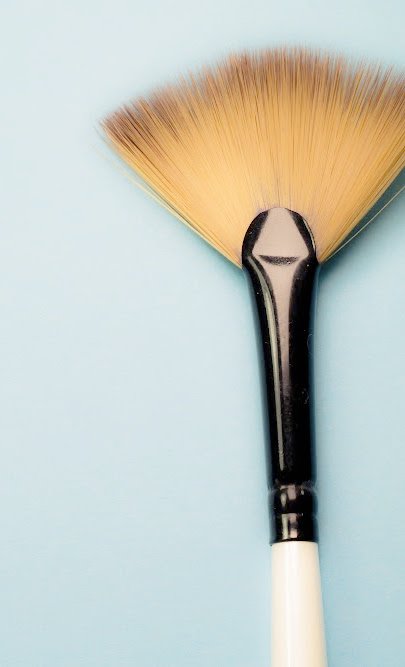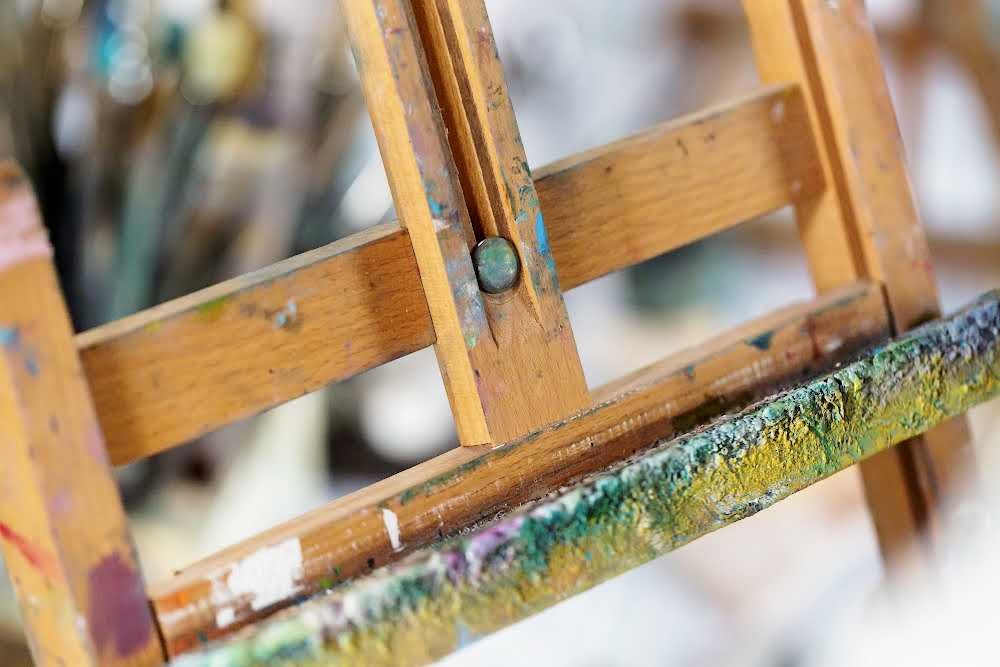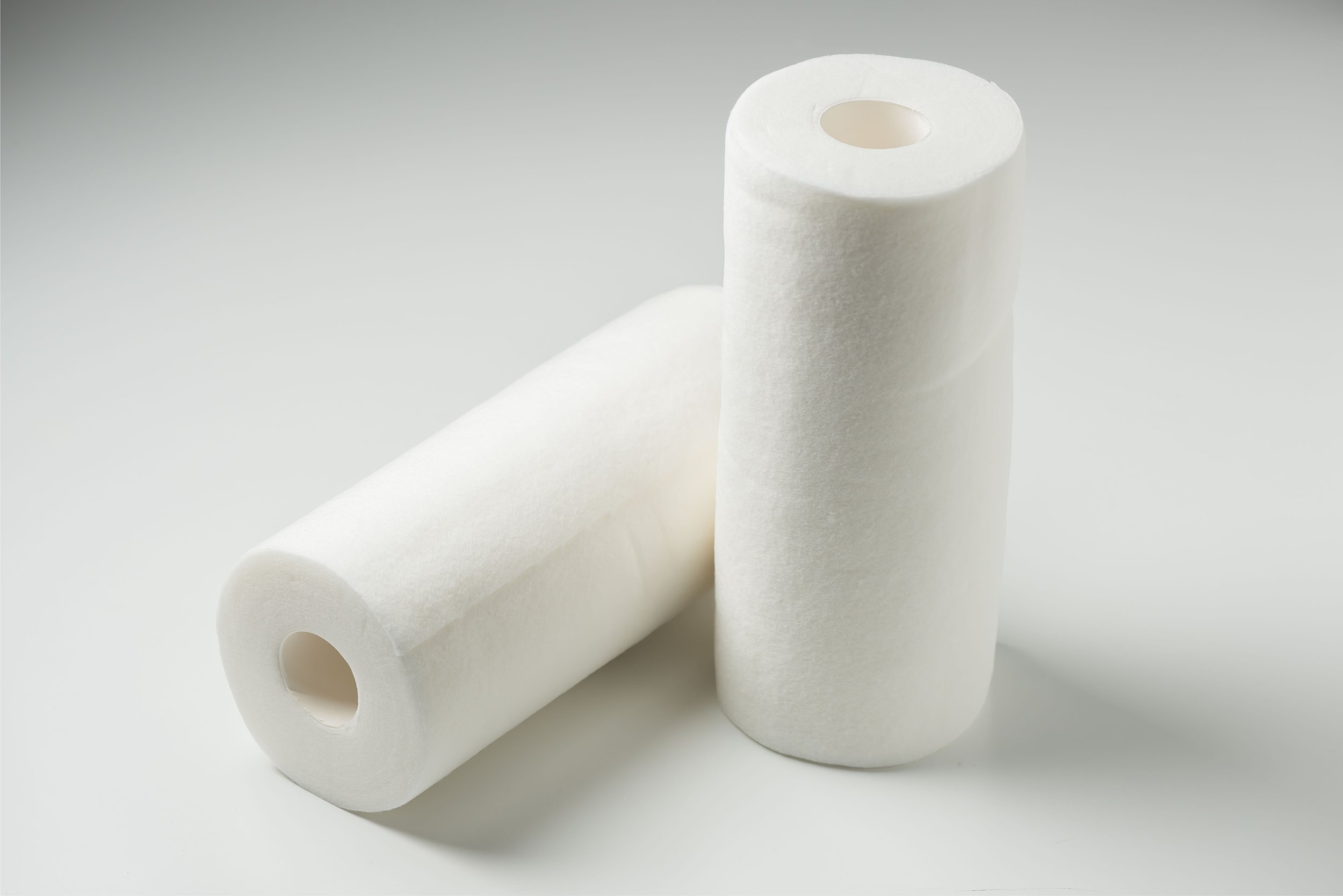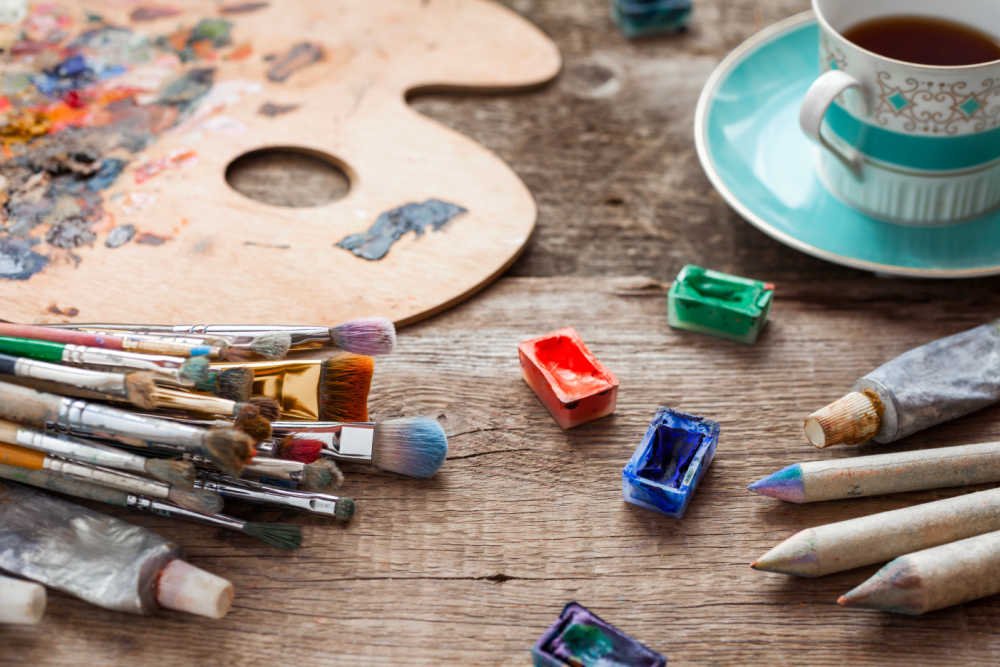Oil Painting Supplies: Art Supplies for Beginners
Before Explaining the Painting Supplies
Hello.
I know you want to dive into oil painting supplies immediately,
but please let me talk about the setup before
the materials you need to use.
Because that's essential for you to keep going.
If you find it difficult to start oil painting
and you think you probably won't be able to continue,
the best way is to secure a "production space" at the beginning.
It can be anywhere in the house even if the area is tiny.
Please do yourself a favor to save a "corner" for oil painting.
Some watercolorists spread materials on a table
and cleaning it up when finished.
But that method is not suitable for oil painting.
If you plan to clean up every time, it's difficult to continue.
So, before you buy your materials,
please consider where in your house you can leave your art supplies.
Okay, let's get into the oil painting materials.
I marked ★ for essential, ◉ for better to have, ▲ for convenient.
You can choose what you need accordingly.
★Oil Painting Supplies: Paint
The first oil painting supply I want to cover is "paint."
Even 10 colors are way more than enough for beginners.
It's much easier to paint with a limited palette.
You can make so many variations with just 4 colors.
(Red, blue, yellow, and white)
But, I know many people start oil painting because they love colors!
If you want to add a lot of colors from the beginning,
you can choose 10 to 12 colors as a set.
It's also important to experience the colors.
Some paints are stiff so it's better to use with a medium
such as linseed oil.
The softer paint is beginner-friendly.
They are easier to paint without a medium.
M. Graham and Rembrandt are relatively not stiff.
By the way, since I use medium, any brand works for me.
★Oil Painting Supplies: Brushes
The brush is one of the essential oil painting supplies.
You don't have to have all the types of brushes.
Please refer to the list below and choose around 3 to get started.
Adjust the brush size according to the size of the canvas in front of you.
The size numbers are not universally unified.
Depending on the brand, the same number can be totally different sizes.
Brush Shapes
【Filbert】
The shape of the brush tip is oval.
This type is suitable for most paintings.
It has an excellent shape for both flat and angel application
Photo source: Rosemary and Co. (clicking the photo will lead you to their webpage)
【Flat】
The flat type is my favorite when it comes to landscape painting.
The brush tip is easy to use for the edge of buildings.
It's also useful for still life such as painting a corner of a desk.
The shape of the brush tip is oval.
This type is suitable for most paintings.
It has an excellent shape for both flat and angel application
【Round】
The round type is easy to handle and suitable for drawing fine lines.
I use a small brush to sign names and add details.
On the other hand, I don't use a large round brush very much.
Filbert can be used instead.
【Bright】
This type of hair is very short,
so it gives the most control when you paint.
Photo source: Rosemary and Co. (clicking the photo will lead you to their webpage)
【Rigger】
Rigger is very helpful to paint a thin line.
Photo source: Rosemary and Co. (clicking the photo will lead you to their webpage)
【Fan】
The fan brush is useful to paint leaves or when blurring the edges.
It is convenient to have one.
Brush Type
【Bristle Hog】
The bristle hog brush is the best type to make brush strokes.
It's elastic and durable, so I use this type the most.
But if you want to paint a smooth surface like a photo, you should avoid hog.
【Synthetic Fiber Nylon】
It is used for underpainting and color sketching.
Of course, you can paint with just a nylon brush, too.
It's easy to wash and the price is very financially friendly.
Having a few on hand is always a good idea.
On the other hand, synthetic brushes are also suitable varnish.
(varnish protects the painting surface)
A brush for varnish should not contain any pigment.
Make sure to separate your varnish brush from all others.
I label it "varnished" in the handle of the brush.
Actually, beginners don't have to worry about varnishing yet.
【Sable】
Sable is very soft and is also used in watercolors,
but when used in oil paintings it can soften edges and use for figures.
【Mongoose】
Mongoose and sable are very similar.
Sable is slightly softer.
When it's difficult to move thicker paint, it's better to use mongoose.
★Oil Painting Supplies: Canvas
Ready Made Canvas
【Cotton Canvas】
Cotton is the most financially friendly choice.
Beginners can start with cotton to practice.
Canvas sheets are also a good choice for beginners for color sketching.
【Linen】
Linen is more expensive than cotton,
but the surface grip is perfect for oil painting.
The rough surface allows you to layer a lot of paint.
【Panel】
The surface is very smooth and comfortable to paint on.
Besides, you don't have to worry about it being crushed when packing.
It's recommended for beginners' use.
Once you get used to the painting materials,
you can also glue linen on the panel's surface.
It's the perfect choice for those who want solid panel support,
but also want a slightly grainy feel of linen.
Stretch Canvas Yourself
For beginners, the commercial canvas is fine.
You don't have to stretch your own canvas.
However, for those who are interested,
I will explain the steps of handmade canvas in another article.
★Oil Painting Supplies: Palette
Wooden Pallet
The wooden pallet has a warm feel that's pretty neutral.
However, if you don't wipe it clean each time,
the pallet will easily become dirty.
One notion about using a wooden palette is that you have to coat/prime it before using it the first time.
Otherwise, the pallet will absorb the oil of the paint tremendously.
I use sunflower oil because the cooking oils (such as salad oil) are the most readily available at the grocery stores.
Spread cooking oil evenly on a wooden pallet with your finger or cloth.
Apply a coat evenly.
It's okay to apply quite thickly.
Leave it until the next day.
The next morning, you'll see the oil is absorbed.
Repeat the process several times until the wooden pallet no longer absorbs oil.
Glass Palette
The glass palette is the easiest type to clean.
You can choose a neutral gray colored paper under the glass.
When you finish painting, cleaning the paint with a scraper feels so nice.
Finally, use a Gamsol to wipe the surface with a paper towel to make it shiny.
Dispossable palette
Make it stand out
Whatever it is, the way you tell your story online can make all the difference.
The disposable palette is like a thin waxed paper,
and when you're done using it,
simply tear it off and throw it away.
It's convenient because it doesn't require cleaning,
but it's not environmentally friendly.
★Oil Painting Supplies: Easel
You can use a studio easel while standing or a desktop easel while sitting during your painting session.
I prefer to stand, so I use studio easels or french easels most of the time.
During painting, I often go back and forward to check my artwork's perspective and overall look.
★Oil Painting Supplies: Paper Towel
A Paper towel is for wiping off the oil paint or after washing the brush.
If you have some old T-shirts or small clothes, you can use them as well.
◉Oil Painting Supplies: Medium
Painting Medium
If you live in Japan, you can use this painting oil medium from Holbein from start to finish. It's a beginner-friendly medium.
Some oil paints are stiff and difficult to spread.
You only need to add a little bit of medium for those kinds of paints to be softer.
The Old Master's Maroger is of excellent quality, but it's expensive with a distinct smell.
I haven't used it myself, but Jackson's Art has another brand: Robertons Maroger.
By the way, the modern version of Maroger is Neo Meglip from Gamblin.
That's the type I use.
Oddorless Mineral Spirit
Odorless Mineral Spirit (OMS) makes oil paints as smooth as watercolors.
It's common to dilute the paint for underpainting.
It also speeds up the drying of the paint.
Then, when cleaning the brush, you can remove most of the paint by putting your brush in a container full of OMS.
Wipe the brush with a paper towel first, wash it in OMS, and wipe it again with a paper towel.
OMS is recommended for beginners.
On the other hand, turpentine can be used as a substitute, but it smells pretty strong, so use it in a well-ventilated place. I tried once, but I wouldn't say I liked the smell…
Cold Pressed Linseed
Linseed oil was the most used medium in the past, but the demerit is that the surface may become yellowed over time if you use too much.
Mixing with Titanium White and Ultramarine Blue will result in the most color deterioration.
Therefore, the point is to use only a tiny amount.
Another usage is to oil out.
Oil out means that if you want to apply paint on a dried-out painting, pour some linseed oil to the surface first, and then remove most of the oil with a tissue.
Thus, the surface will have a layer of light oil.Now we can paint more smoothly.
Stand Oil
Beginners don't need stand oil but keep reading this section if you're interested.
What is stand oil?
You expose linseed oil to high temperatures and let it cook under the sun for a long time till you get a honey-like sticky viscosity. That's stand oil.
We typically mix stand oil with a solvent such as turpentine or odorless mineral spirit (OMS).
Since the oil content is high, you need to use it by following the "fat over lean" rule.
What is fat over lean?
When applying paint, many layers are used, so the lower layer needs to have more OMS (dries faster).
In contrast, the top layers need to contain more and more oil.
When it comes to the upper layers, use linseed oil or stand oil.
By doing so, cracks are less likely to occur.
Galkyd
Alkyd contains a quick-drying agent, and you can finish your artwork from beginning to finish by using this medium.
That's why beginners tend to use it more frequently.
Just for your information, Gamblin offers Galkyd in its product line.
It's a transparent and glossy finish.
Gamblin Galkyd Lite melts paint thinner than Galkyd, and it's a low gloss finish.
Mix Your Own Medium
Here are three types of medium mixing recipes that I use.
[For pencil writing]
When you put paint on top of a pencil underpainting, the pencil line will disappear immediately.
Therefore, applying a thin varnish sealing layer will help the pencil lines to stay.
1 : 1 ratio
Dammal Varnish : Odorless Mineral Spirit (OMS)
in a small jar and shake well.
Apply the solution thinly with a sponge over a pencil underpainting.
Make sure you don't apply thickly.
If you do so, the underpainting layer will be sticky.
At the same time, the upper layers you put later on will deform.
[For underpainting]
Make a solution that is low in oil.
At a ratio of 1 : 2
OMS : Cold Pressed Linseed Oil
in a bottle and shake well.
[For upper layers]
Make a solution that contains a lot of oil.
1 : 1 ratio
Stand oil : Cold Pressed Linseed Oil
in a jar and shake well.
◉Oil Painting Supplies: Scraper
I use it quite a bit because it's extremely convenient to clean any palette.
I bought a scraper at Lowe's.
◉Oil Painting Supplies: Container
Brush Washer
The inside of a brush washer is divided into two parts.
The top part has a structure with lots of holes in the middle.
After pouring in the OMS, you can press the brush's tip against the plate to wash off the paints.
Over time, the pigments will sink to the bottom, leaving clean OMS on the top.
You can use two glass bottles to create a similar effect instead of buying a brush washer.
In that case, prepare a larger and small-sized glass jar each.
Pour clean OMS in a smaller jar.
Wipe off paints with paper towels and wash off the rest of the paint in the small jar.
Once done, pour all the OMS into a larger jar.
After a day, the paint will sink in the larger jar, leaving the top OMS clean.
When you need to wash the brushes, gently pour the OMS from the larger jar into a smaller jar.
Repeat the process so you'll always have clean OMS to use.
Small Jar
It's convenient to put the medium in a small jar to use, but it's just a preference.
You don't have to buy a specific type.
I use the sauce jar instead.
▲ Other Oil Painting Supplies
Palette Knife and Painting Knife
A palette knife is used when mixing colors.
A painting knife is used when painting on a canvas directly.
The tip of a painting knife should be thinner and more flexible.
Some painters use only a painting knife to finish a painting with almost no brush, but that is a matter of personal taste and style.
While there are many uses for painting knives, the most significant advantage is creating a sharp edge.
Sanguine
Make it stand out
Whatever it is, the way you tell your story online can make all the difference.
It's a good idea to use soft red sanguine when transferring a drawing to the canvas. Sepia is also available for use.
You can always use charcoal as a substitute.
Use your fingers to rub the sanguine powder on the back of the tracing paper.
Tape the tracing paper on the canvas, and trace the line from above with a pen.
You can also use Sanguine to sketch the top of a toned canvas.
Mahl Stick
When you want to draw small details, rest your arm on the Mahl Stick to make it more stable and easier to draw.
Gloves for Cleaning
Some people scrub the oil brush with their palms, but I wear gloves when washing.
Sometimes I wear gloves when I paint as well.
Brush Wash Cleaner
You can use a brush cleaner or Odorless Mineral Spirit (OMS).
Wipe the oil brush once with a paper towel and then press it several times in OMS jar to wash off some excessive paints.
You can also wipe it with a paper towel and then wash it with soap.
I use brush cleaner soap, but even ordinary soap can remove paint.
By the way, you don't have to wash the brush after each painting.
For those who paint every day:
If you soak the brush in salad oil, you can wash it once a month without any problem.
As a procedure
Wipe off the paint with a paper towel →
Press several times it OMS →
Wipe off with a paper towel →
Dip in salad oil →
Let the brush lie down (I put it on top of my glass palette)
When I need to paint the next day, wipe off the vegetable oil with a paper towel →
Press it in OMS several times →
Wipe off with a paper towel →
start to use
Would you mind trying this method if washing the brushes has been an obstacle for you to paint?
Oil Painting Supply Summary
In the beginning, I mentioned that reserving a "corner" for oil painting is one of the most important tasks.
The minimum tube colors for beginners are red, yellow, blue, and white.
Assorted oil painting brushes
Canvas
Easel
Palette
and Paper towel
Other materials can be added slowly, and you don't have to worry about it for now.
Good art supplies are exciting. If adding more supplies stimulates you to paint more, please do so!
I hope you'll enjoy your creative time from bottom of my heart.



